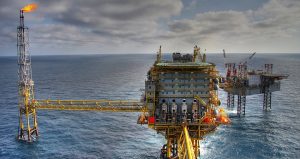European companies worldwide leading in water governance

-
 Esther Rasenberg
Esther Rasenberg
Share article:
European companies are more aware of water risks than their global peers. This is the conclusion of the latest CDP report on Safeguarding Europe’s water resources. A lot of respondents to the CDP survey experienced water stress last year and are aware the of weak water situation on their continent. Worldwide respondents seem less informed and less engaged.
Seventy European companies, among others Bayer, BASF, Acciona, Heineken, Air Liquide, Nokia, Philips, replied to the CDP-survey. These questionnaires were the basis for the CDP report. Between the different sectors there are marked differences. For example, the materials, consumer staples and utilities sectors all saw response rates of close to 90% whilst the Energy sector saw only a 50% response rate, and neither of the two European companies targeted in the Information Technology sector responded.
Need for adequate water policy
Cate Lamb, head of water at CDP, asks European policy makers to consider the findings of the report and calls on them to enncourage greater levels of corporate transparency and pursue policy initiatives that support water stewardship across Europe. Policy makers have an opportunity to capitalise on some sectors leading performance and push for improved disclosure from those sectors falling behind European reporting standards. A focus on the low response sectors, such as Energy and Information Technology, will ensure companies providing a vital service to Europe engage with water as a critical issue.
Water risks
European companies are exposed to water risk around the world, but especially within Europe. With 83% of European respondents reporting operations located in water stressed regions, identifying potential water risk exposure in both direct operations and supply chains is a vital step for companies to safeguard their business. 80 countries were identified by respondents as being ‘water stressed’, of those countries, Europe was the region where most operations were located. Additionally, a higher proportion of European respondents report exposure to water risks that could cause a substantive change in their business, operations, revenue and expenditure compared to their global peers.
Energy sector stays behind
Results from the Energy sector suggest a potential lack of understanding as to water related risk, as only 33% of European energy sector respondents report exposure to water risks compared to 82% of their global peers. This potentially important finding requires further analysis given the sample size for this sector.
Controlling supply chain
Importantly, the majority of risks reported (193 short term risks to direct operations) are anticipated to impact either now or in the next few years, suggesting that an urgent response is required. European respondents also report greater levels of engagement with their supply chains. Slightly less than half (44%) of respondents require their key suppliers to report on their water risks, more than the third (37%) of global organizations who require the same of their key suppliers.
Water stress
One final factor potentially contributing to the higher levels of risk exposure could be that 58% of European respondents have already experienced detrimental water-related impacts in the past five years, the same percentage experienced by the Global 500, encouraging proactive engagement with the issue. Impacts related to tightening of water-related regulation, inadequate water infrastructure and increasing water stress were reported. E.ON for example, experienced water shortages, leading to reduced water flow for its hydroelectric power generators in 2011 that resulted in 0.5billion kWh (9%) less power generated than usual. Our analysis indicates European respondents have both direct operations and supply chains in Europe and the evidence provided shows that companies view Europe as a region of water risk. Policy makers are asked to support greater corporate water stewardship in Europe in an effort to encourage companies to identify water impacts and mitigate water related risk.















